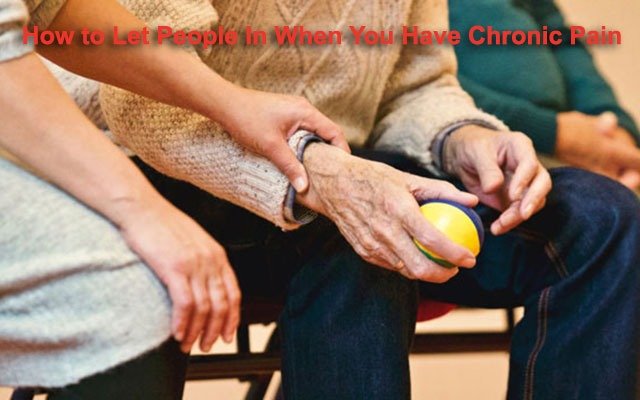Rebuilding Intimacy

One of my first research studies involved examining the significance of the three most important people in one’s life to psychological well being and distress. I asked study participants to identify the most, 2nd most, and 3rd most important people in their lives and I asked a series of questions about the involvement of the three most important people in participants’ important goals.
One of the most interesting findings was that after accounting for the psychological impact of the most important person, the 2nd and 3rd most important people didn’t add much – either good or bad. The most important person in our lives really carries a lot of weight in how we are feeling. A related concept is the idea of having someone to confide it. Other researchers have found that the presence of a confidant has been found to play an important role in psychological and physical health.
Chronic pain can be challenging for relationships, especially with the people who matter most. I want to talk about two approaches to rebuilding. But first, give some thought to who is your most important person. Given the research that I talked about above, it makes sense to focus on that relationship first. Your most important person doesn’t have to be a spouse or partner. Many of the people in our studies do mention a spouse or partner, but many others mention a friend, a brother or sister, parent, or adult child.
To rebuild or strengthen intimacy, consider increasing the positive and decreasing the negative. Take some time to think about how you can increase positive sharing and decrease negativity from pain by controlling how much you share about your pain.
Positive Sharing
For many people, pain gets in the way of what used to matter. It often interferes with the shared activities, values, and goals of a relationship.Ask your most important person to sit down with you and figure out what matters to you both. Below are some topics to get your conversation started:
- What are some of the things that you have always both valued? Music, volunteering, your church group? Is there a way you can still share those things?
- What can you do together that is fun? Ideas shouldn’t be expensive, time consuming, or pain producing.
- What part of the other person’s life interests you most? Can you try to share more with each other?
- If your most important person is your sex partner: What sexual activity would you like to do more of?
- Can you set aside some time each day to each talk about your day?
- Is there something new that you would both enjoy doing or learning about?
Controlled Talk about Pain
When you have pain, it is completely normal and natural to talk about it. One of the most frequent ways in which people talk about pain is to simply say “I hurt”. It is the most natural thing in the world to say, “My back really hurts today” or “My head hurts so much” or “I hurt all over” or “My knee is really hurting”. In the context of acute pain, it is the most basic way to ask for help. With chronic pain, talking about it too much can sometimes have a negative impact.
You may want to ask yourself “How frequently do I tell my most important person that I am hurting?” If it is often throughout the day, your pain expressions may be having a negative impact. Put yourself in the shoes of the listener for a moment. The listener may begin to feel powerless since there may be nothing he or she can do to help. Or the listener may try too hard to help and you may fall into the role of a sick person and feel, or even become, more disabled than you really are. Another thing to consider is that you may feel frustrated if your complaints are not responded to – but if you express your pain quite often, it can become “old news”.
Your most important person cares how you feel. Let him or her know when the news is new – when you are feeling much worse or a bit better. You might benefit also from thinking about what you would like your most important person to do or say when you share how you are feeling. Talk it over together. This will help him or her to be more effective and loving.
————————————————————————————————————————————————————
About the Author. Dr. Linda Ruehlman is a social/health psychologist and researcher, co-founder of Goalistics, and director of the Chronic Pain Management Program, an interactive site that helps people with chronic pain to manage their pain and live richer, more effective lives as well as Think Clearly about Depression, a self-management program for depression.
DISCLAIMER: This blog is provided as an educational and informational resource only. It is not intended nor implied to be a substitute for professional psychological or medical advice.
PainPathways Magazine
PainPathways is the first, only and ultimate pain magazine. First published in spring 2008, PainPathways is the culmination of the vision of Richard L. Rauck, MD, to provide a shared resource for people living with and caring for others in pain. This quarterly resource not only provides in-depth information on current treatments, therapies and research studies but also connects people who live with pain, both personally and professionally.
View All By PainPathways






